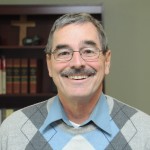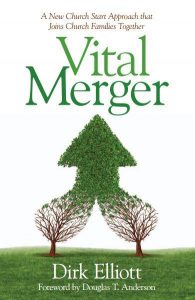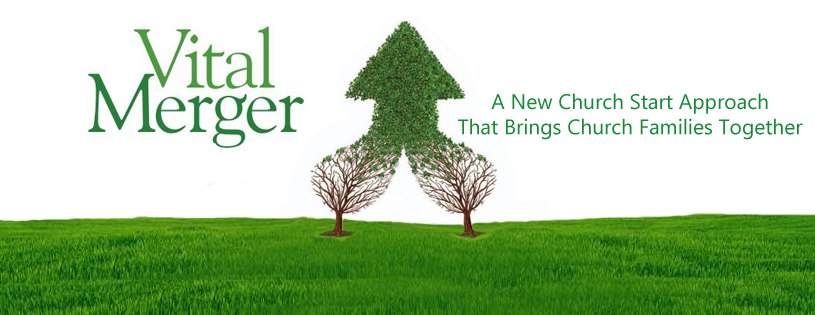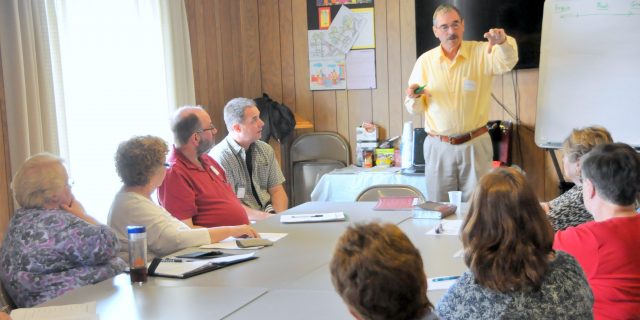 The Rev. Gordon Hendrickson’s job title at the Eastern PA Conference is Coordinator of Congregational Development. But it might as well be Evangelist of Congregational Development, so ardent is his crusade to spread the gospel of a more excellent way to save and grow churches.
The Rev. Gordon Hendrickson’s job title at the Eastern PA Conference is Coordinator of Congregational Development. But it might as well be Evangelist of Congregational Development, so ardent is his crusade to spread the gospel of a more excellent way to save and grow churches.
Such growth—especially doing it the right way, from the inside out—is necessary and challenging, to say the least. But when it comes to doing it through successful church mergers, well, let’s just say the gate is narrow to reach that goal.
 But Hendrickson will share that more excellent way of Vital Church Mergers with an interested gathering of local church leaders next Saturday, March 25, from 8:30 AM to 12 noon, at Christ UMC Lansdale. He will use the popular 2013 book by that title, written by the Rev. Dirk Elliott, a church consultant and coach, a conference congregational development director and former new church planter. Elliott shared his compelling research and ideas with the Cabinet and several pastors at a meeting here in 2015.
But Hendrickson will share that more excellent way of Vital Church Mergers with an interested gathering of local church leaders next Saturday, March 25, from 8:30 AM to 12 noon, at Christ UMC Lansdale. He will use the popular 2013 book by that title, written by the Rev. Dirk Elliott, a church consultant and coach, a conference congregational development director and former new church planter. Elliott shared his compelling research and ideas with the Cabinet and several pastors at a meeting here in 2015.
Hendrickson initially expected 25 or so people to attend. Now he’s anticipating 70 to 80. There is no preregistration, but if you’re interested in attending, contact him directly.
Recommended by their district superintendents, many attendees will be motivated by their churches’ urgent desire to live and not die. Some may even be on life support or near death, he says. They may be trying to hang on and continue serving their congregations and communities, despite dwindling memberships, ministries, leadership and finances. Yet, revival will not come by simply hanging onto what’s left of a glorious past, but instead by being born again, as Jesus told the puzzled Pharisee Nicodemus.
Hendrickson says there are five options a church must choose from at this point in its life-or-death cycle.
- It can try to stay the same and do nothing new, which should hasten its decline and death.
- Conversely, it can try to make all things new on its own, by virtually “changing its DNA,” Hendrickson likes to say—changing its worship, programs, facilities and entire outlook on ministry. That’s real hard.
- Or a declining congregation can seek company and collaboration with other churches in several ways. They can seek a church merger or become part of a multiple-point charge. Usually, he says, that’s just so they can share and afford to pay a pastor. That might work for a while, but it rarely produces substantial growth, and too often the decline persists.
- The church can also seek to become a satellite church, adopted by a larger, more successful and active congregation—sort of a friendly takeover. We have examples of both successful and unsuccessful satellite church attempts in our conference. “The problem,” says Hendrickson, “is that the weaker, adopted church surrenders power and control of its own existence. They get to keep worshipping and serving their community, but without the same identity,” especially when the mother church starts changing and rebranding its adoptee to reflect its own image and style.
- Finally, there’s the “vital merger,” option, which resembles a marriage rather than an adoption. Like option #2, it too is hard; but the chance to share the load and the excitement of doing a new thing with a new life-partner (or a new-life partner) can make it more challenging and more gratifying. That’s especially true if the two become one, move out of their individual buildings and mindsets to jointly create a new home, a new identity, a new reality, and indeed, a new future with hope.
A vital merger is much different and can be much more productive in ministry and membership growth than a mere merger. Yes, the participating churches and members do give up power, control and the familiarity of doing things “the way we’ve always done them.” But they can gain a fresh new vision and mission, and they become essentially born again as a new church start, says Hendrickson.
The process can take from eight to 24 months, he warned—which means churches on life-support, facing imminent death, may have difficulty making it through the transition and successfully reprogramming with their morale intact. But perhaps the biblical account of Lazarus’ revival proves that when placed in the hands of Jesus Christ, even miracles that arrive late can still happen.

The March 25 workshop will show that a vital church merger is a lengthy process, because the merger information doesn’t come until midway in the session, Hendrickson said. The preliminaries in the session and in real life include preparatory concepts and steps he has been introducing in workshops and past issues of NEWSpirit newspaper: “Re-envisioning Congregational Development” to serve the needs of the community first, rather than the church; using Mission InSite and Tom Bandy’s lifestyles research to learn “who is my neighbor”; and developing spiritual leadership as a starting point. His recent articles would be worth reading for those who plan to attend the Vital Mergers session:
- Re-envisioning Congregational Development, Part 1
- Re-envisioning Congregational Development, Part 2
- From near-death to life through ‘Vital Merger’
 In addition, there is a helpful article on vital mergers written by Dirk Elliott, titled
In addition, there is a helpful article on vital mergers written by Dirk Elliott, titled
Vital Merger: A New Church Start Approach that Joins Church Families Together. It introduces the short history of Down River UM Church in the Detroit area, established with Elliott’s help in 2013 from a vital merger of four congregations.
“We all left our buildings to meet in a neutral site… to do this new thing that God is calling us to do,” says its pastor. “We are learning to serve others as we become strong followers of Jesus Christ.”
 Down River Church celebrated its first worship service as a new church start with 186 people in July 2013. That was five years after each of the four churches voted, with over a 70 percent majority, to become a new church together.
Down River Church celebrated its first worship service as a new church start with 186 people in July 2013. That was five years after each of the four churches voted, with over a 70 percent majority, to become a new church together.
The article and a short video about Down River Church on the Vital Mergers Facebook page together give glimpses into what is making this bold, promising experiment successful and what it may take for other churches to do likewise. Such models and the wisdom that “Evangelist Hendrickson” will share on March 25 may point the way to that narrow gate that can produce healthy, newly merged—or rather newly married—churches ready to grow their new families.

